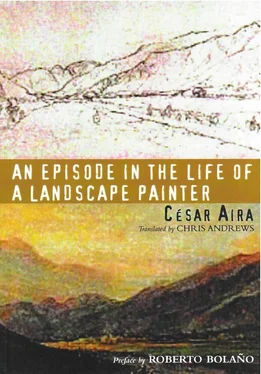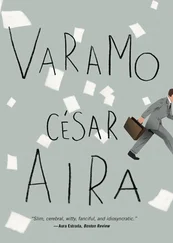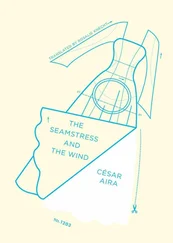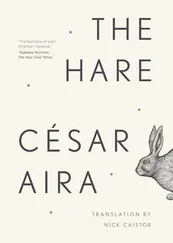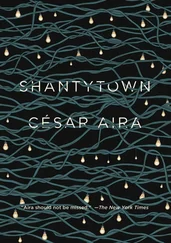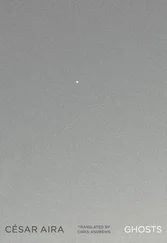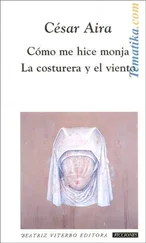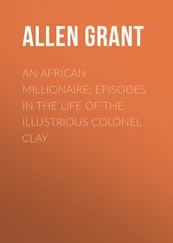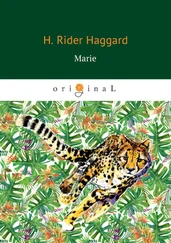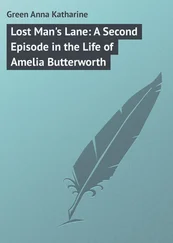Cesar Aira - An Episode in the Life of a Landscape Painter
Здесь есть возможность читать онлайн «Cesar Aira - An Episode in the Life of a Landscape Painter» весь текст электронной книги совершенно бесплатно (целиком полную версию без сокращений). В некоторых случаях можно слушать аудио, скачать через торрент в формате fb2 и присутствует краткое содержание. Год выпуска: 2006, Издательство: New Directions, Жанр: Современная проза, на английском языке. Описание произведения, (предисловие) а так же отзывы посетителей доступны на портале библиотеки ЛибКат.
- Название:An Episode in the Life of a Landscape Painter
- Автор:
- Издательство:New Directions
- Жанр:
- Год:2006
- ISBN:нет данных
- Рейтинг книги:5 / 5. Голосов: 1
-
Избранное:Добавить в избранное
- Отзывы:
-
Ваша оценка:
- 100
- 1
- 2
- 3
- 4
- 5
An Episode in the Life of a Landscape Painter: краткое содержание, описание и аннотация
Предлагаем к чтению аннотацию, описание, краткое содержание или предисловие (зависит от того, что написал сам автор книги «An Episode in the Life of a Landscape Painter»). Если вы не нашли необходимую информацию о книге — напишите в комментариях, мы постараемся отыскать её.
An Episode in the Life of a Landscape Painter
An Episode in the Life of a Landscape Painter — читать онлайн бесплатно полную книгу (весь текст) целиком
Ниже представлен текст книги, разбитый по страницам. Система сохранения места последней прочитанной страницы, позволяет с удобством читать онлайн бесплатно книгу «An Episode in the Life of a Landscape Painter», без необходимости каждый раз заново искать на чём Вы остановились. Поставьте закладку, и сможете в любой момент перейти на страницу, на которой закончили чтение.
Интервал:
Закладка:
Rugendas was a genre painter. His genre was the physiognomy of nature, based on a procedure invented by Humboldt. The great naturalist was the father of a discipline that virtually died with him: Erdtheorie or La Physique du monde , a kind of artistic geography, an aesthetic understanding of the world, a science of landscape. Alexander von Humboldt (1769–1859) was an all-embracing scholar, perhaps the last of his kind: his aim was to apprehend the world in its totality; and the way to do this, he believed, in conformity with a long tradition, was through vision. Yet his approach was new in that, rather than isolating images and treating them as "emblems" of knowledge, his aim was to accumulate and coordinate them within a broad framework, for which landscape provided the model. The artistic geographer had to capture the "physiognomy" of the landscape (Humboldt had borrowed this concept from Lavater) by picking out its characteristic "physiognomic" traits, which his scholarly studies in natural science would enable him to recognize. The precise arrangement of physiognomic elements in the picture would speak volumes to the observer's sensibility, conveying information not in the form of isolated features but features systematically interrelated so as to be intuitively grasped: climate, history, customs, economy, race, fauna, flora, rainfall, prevailing winds… The key to it all was "natural growth," which is why the vegetable element occupied the foreground, and why, in search of physiognomic landscapes, Humboldt went to the tropics, which were incomparably superior to Europe in terms of plant variety and rates of growth. He lived for many years in tropical regions of Asia and America, and encouraged the artists who had adopted his approach to do likewise. Thus he established a circuit, stimulating curiosity in Europe about regions that were still little known and creating a market for the works of the traveling painters.
Humboldt had the highest admiration for the young Rugendas, whom he dubbed the "founding father of the art of pictorial presentation of the physiognomy of nature", a description that could well have applied to himself. He played an advisory role in the painter's second great voyage, and the only point on which they disagreed was the decision to include Argentina in the itinerary. Humboldt did not want his disciple to waste his efforts south of the tropical zone, and in his letters he was generous with recommendations such as the following: "Do not squander your talent, which is suited above all to the depiction of that which is truly exceptional in landscape, such as snowy mountain peaks, bamboo, tropical jungle flora, groups composed of a single plant species at different ages; filiceae, lataniae, feathery-fronded palms, bamboo, cylindrical cactuses, red-flowered mimosas, the inga tree with its long branches and broad leaves, shrub-sized malvaceous plants with digitate leaves, particularly the Mexican hand plant (Cheirantodendron) in Toluca; the famous ahuehuete of Atlisco (the thousand-year-old Cupressus disticha) in the environs of Mexico City; the species of orchids that flower beautifully on the rounded, moss-covered protuberances of tree-trunks, surrounded in turn by mossy bulbs of dendrobium; the forms of fallen mahogany branches covered with orchids, banisteriae and climbing plants; gramineous species from the bamboo family reaching heights of twenty to thirty feet, bignoniaceae and the varieties of Foliis distichis; studies of pothos and dracontium; a trunk of Crescentia cujete laden with calabashes; a flowering Teobroma cacao with flowers springing up from the roots; the external roots of Cupressus disticha, up to four feet tall, shaped like stakes or planks; studies of a rock covered with fucus; blue water lilies in water; guastavia (pirigara) and flowering lecitis; a tropical jungle viewed from a vantage point high on a mountain, showing only the broad crowns of flowering trees, from which the bare trunks of the palms rise like a colonnade, another jungle on top of the jungle; the differing material physiognomies of pisang and heliconium…"
The excess of primary forms required to characterize a landscape could only be found in the tropics. In so far as vegetation was concerned, Humboldt had reduced these forms to nineteen: nineteen physiognomic types that had nothing to do with Linnean classification, which is based on the abstraction and isolation of minimal differences. The Humboldtian naturalist was not a botanist but a landscape artist sensitive to the processes of growth operative in all forms of life. This system provided the basis for the "genre" of painting in which Rugendas specialized.
After a brief stay in Haiti, Rugendas spent three years in Mexico, from 1831 to 1834. Then he went to Chile, where he was to live for eight years, with the exception of his truncated voyage to Argentina, which lasted roughly five months. The original aim had been to travel right across the country to Buenos Aires, and from there to head north to Tucumân, Bolivia and so on. But it was not to be.
He set out at the end of December 1837 from San Felipe de Aconcagua (Chile), accompanied by the German painter Robert Krause, with a small team of horses and mules and two Chilean guides. The plan was to take advantage of the fine summer weather to cross the picturesque passes of the Cordillera at a leisurely pace, stopping to take notes and paint whenever an interesting subject presented itself. And that was what they did.
In a few days — not counting the many spent painting — they were well into the Cordillera. When it rained they could at least make headway, with their papers carefully rolled up in waxed cloth. It was not really rain so much as a benign drizzle, enveloping the landscape in gentle tides of humidity all afternoon. The clouds came down so low they almost landed, but the slightest breeze would whisk them away… and produce others from bewildering corridors which seemed to give the sky access to the center of the earth. In the midst of these magical alternations, the artists were briefly granted dreamlike visions, each more sweeping than the last. Although their journey traced a zigzag on the map, they were heading straight as an arrow towards openness. Each day was larger and more distant. As the mountains took on weight, the air became lighter and more changeable in its meteoric content, a sheer optics of superposed heights and depths.
They kept barometric records; they estimated wind speed with a sock of light cloth and used two glass capillary tubes containing liquid graphite as an altimeter. The pink-tinted mercury of their thermometer, suspended with bells from a tall pole, preceded them like Diogenes' daylight lamp. The regular hoof-beats of the horses and mules made a distant-seeming sound; though barely audible, it too was a part of the universal pattern of echoes.
Suddenly, at midnight, explosions, rockets, flares, resonating on and on among the immensities of rock and bringing quick splashes of vivid color to those vast austerities: it was the start of 1838, and the two Germans had brought a provision of fireworks for their own private celebration. They opened a bottle of French wine and drank to the new year with the guides. After which they lay down to sleep under the starry sky, waiting for the moon, which emerged in due course from behind the silhouette of a phosphorescent peak, putting a stop to their drowsy listing of resolutions and launching them into true sleep.
Rugendas and Krause got on well and had plenty to talk about, although both were rather quiet. They had traveled together in Chile a number of times, always in perfect harmony. The only thing that secretly bothered Rugendas was the irremediable mediocrity of Krause's painting, which he was not able to praise in all sincerity, as he would have liked. He tried telling himself that genre painting did not require talent, since it was all a matter of following the procedure, but it was no use: the pictures were worthless. He could, however, appreciate his friend's technical accomplishment and above all his good nature. Krause was very young and still had time to choose another path in life. Meanwhile he could enjoy these excursions; they would certainly do him no harm. Krause, for his part, was in awe of Rugendas, and the pleasure they took in each other's company was due in no small measure to the disciple's devotion. The difference in age and talent was not obvious, because Rugendas, at thirty-five, was timid, effeminate and gawky as an adolescent, while Krause's aplomb, aristocratic manners and considerate nature narrowed the gap.
Читать дальшеИнтервал:
Закладка:
Похожие книги на «An Episode in the Life of a Landscape Painter»
Представляем Вашему вниманию похожие книги на «An Episode in the Life of a Landscape Painter» списком для выбора. Мы отобрали схожую по названию и смыслу литературу в надежде предоставить читателям больше вариантов отыскать новые, интересные, ещё непрочитанные произведения.
Обсуждение, отзывы о книге «An Episode in the Life of a Landscape Painter» и просто собственные мнения читателей. Оставьте ваши комментарии, напишите, что Вы думаете о произведении, его смысле или главных героях. Укажите что конкретно понравилось, а что нет, и почему Вы так считаете.
